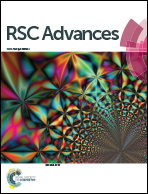A simplified fabric phase sorptive extraction method for the determination of amphetamine drugs in water samples using liquid chromatography-mass spectrometry
Abstract
Fabric phase sorptive extraction (FPSE) can directly extract the target analytes and simultaneously determine many similar substances from complicated sample matrices. Also, it has very high chemical stability. Therefore, we used fabric phase sorptive extraction to analyze three amphetamine drugs (amphetamine (AM), methamphetamine (MAM), and 3,4-methylenedioxymethamphetamine (MDMA)) in water. This was coupled with ultrahigh-performance liquid chromatography and tandem mass spectrometry. The effects of different sorbent chemistries such as sorption time, ratios of back-extraction solvents, back-extraction time, and the salt effect on the extraction efficiency were studied; the optimum operation conditions were determined. Medium polarity polar polymer-coated FPSE media were created using short-chain poly (tetrahydrofuran) (PTHF). This is the most efficient extraction media for the analytes of interest. Under the optimized conditions, the linear range of the three amphetamine drugs were 0.1–150.0 (AM, MAM) and 0.5–200 ng mL−1 (MDMA). The correlation coefficients (γ) were 0.9947 (AM), 0.9925 (MAM), and 0.9918 (MDMA). The detection limits (LOD) were 0.025 ng mL−1 for AM, 0.029 ng mL−1 for MAM, and 0.01 ng mL−1 for MDMA. The corresponding limit of quantification values (LOQ) were 0.083 ng mL−1, 0.097 ng mL−1, and 0.031 ng mL−1, respectively. The recoveries were 73.4–91.6%, 82.6–95.4%, and 92.7–95.3%, respectively, and the relative standard deviations (RSD) were 1.65–6.88%, 1.38–6.11%, and 1.58–7.34%, respectively. Moreover, our method can be successfully applied for the analysis of amphetamines in wastewater samples, and at the same time, lays the foundation for the future detection of such substances.



 Please wait while we load your content...
Please wait while we load your content...